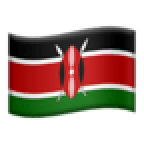From the Kenyan shilling to the American dollar, every currency has a name, and every name has a story.
The names of our money are not just labels; they are artefacts of culture, power, and surprising global connections.
The shilling
The name of Kenya's currency, the shilling, traces back over a thousand years to the Old English word scilling, literally translating to ‘twentieth of a pound’.
The shilling was introduced to East Africa in 1921 by the British colonial administration, replacing the rupee.
For over four decades, the East African shilling was the currency for Kenya, Uganda, and Tanganyika.
&format=jpeg)
The East African shilling
After independence, Kenya established its own economic identity.
In 1966, the new Central Bank of Kenya introduced the Kenyan shilling (KES) as the official currency, featuring the portrait of President Jomo Kenyatta.
&format=jpeg)
The Kenyan shilling, featuring the portrait of President Jomo Kenyatta.
Currencies across the world carry similar echoes of history, culture, and geography in their names.
Named for nature or place
Some currency names are tied directly to the environment.
In Botswana, a country with 70 per cent of its land covered by the Kalahari Desert, the currency is the pula.
&format=jpeg)
The Pula - Botswana
The name Pula translates to rain or blessing in Setswana and was selected when the national currency was introduced in 1976; the subunit thebe translates to 'shield.'
South Africa's rand is named after the Witwatersrand, the 'Ridge of White Waters,' a geographical feature famous for having one of the world's largest gold deposits.
&format=jpeg)
The SA Rand
The weight of its metal
Historically, a coin’s value was tied to the weight of its metal.
The British pound sterling comes from the Latin poundus, meaning 'weight,' as its value was once equal to a pound of silver.
&format=jpeg)
The Sterling Pound
The lira and peso also come from words for weight.
&format=jpeg)
The Italian lira
The ancient Greek drachma came from a word meaning 'a handful,' referring to a grasp of metal rods used as early currency.
Russia’s ruble was a specific measure of weight for silver, and the Israeli shekel comes from an ancient Hebrew word that also means "weight."
Poland's złoty is even more direct, as the name simply means "golden."
By royal decree
Royal authority was another source of monetary value.
The rial of Iran and the riyal of Saudi Arabia come from the Latin regalis, or 'royal.'
&format=jpeg)
The Saudi riyal
Across Scandinavia, the Swedish krona and the Danish and Norwegian krone both translate to 'crown.'
&format=jpeg)
The krona
The franc gets its name from early French coins inscribed with Francorum Rex, Latin for 'King of the Franks.'
&format=jpeg)
Swiss franc
The dinar, used from Serbia to Kuwait, descends from the denarius, a silver coin from the Roman Empire.
&format=jpeg)
Roman denarius
Flowers and jagged edges
Other names tell more intricate stories.
The Hungarian forint traces its origin to 13th-century Florence, where a gold coin called the fiorino was named for the flower (fiore in Italian) stamped on its face.
&format=jpeg)
Hungarian forint
In Malaysia, the ringgit means 'jagged,' a reference to the serrated edges of Spanish silver dollars that circulated in the region, which were designed to prevent thieves from shaving off precious metal.
Joachimsthaler: The dollar
The dollar’s story begins not in America, but in a 16th-century valley in Bohemia (now the Czech Republic).
&format=jpeg)
The United States dollar
The valley, Joachimsthal, was a source of silver.
Coins minted there were called joachimsthaler, later shortened to thaler.
&format=jpeg)
Joachimsthaler
The term evolved as it spread across Europe, becoming 'dollar' in English and was adopted as the official U.S. currency in 1792.
The shape
Sometimes, a name is simply descriptive.
The Chinese yuan, Japanese yen, and Korean won all come from a Chinese character meaning 'round coin.'
&format=jpeg)
The Japanese yen
Ultimately, the name on a banknote, whether it's a shilling or a dollar, isn't just a label.
It's a history lesson in your hand.


&format=jpeg)
)
&format=jpeg)
&format=jpeg)
&format=jpeg)
&format=jpeg)
&format=jpeg)
&format=jpeg)
&format=jpeg)